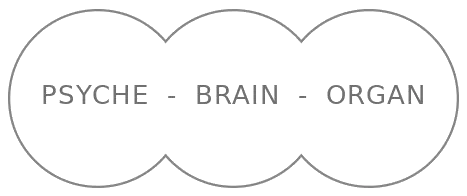

An individual heals himself by addressing the cause:
the DHS - the biological conflict shock
Germanische Heilkunde® was discovered and founded by a true genius and pioneer Dr. Med. Ryke Geerd Hamer in 1981. GHK is a natural science with 5 biological laws that describe the connection of the 3 levels psyche, brain, and organ that always function as a unit.
Why should you learn Germanishe Heilkunde?
In order to learn Germanische Heilkunde (GHk), you have to learn how to think biologically. To think biologically, you have to have a good understanding of the basics of GHk. The basics are, first and foremost, about learning to think biologically.
It is primordial to have a solid understanding of the basic program of GHk to learn advanced concepts such as constellations, psychoses, and special programs.
In GHk, it is not necessary to understand all the chemical processes, latin names, so-called diseases, drugs, and diagnoses; maybe this is crucial for a doctor, therapist, or geneticist, but not for thinking biologically.
At GHk International Academy, we do not train doctors or therapists because we would need universities and access to laboratories and medical facilities, and none of this is available to us. The current system does not allow us to practice and teach medical carers openly.
At GHk International Academy, we teach healthy and interested people how to think biologically, so that they understand the fundamental laws of nature. In this way, these people can apply this knowledge to their bodies without fear or panic.
For example, a mother does not need to know Latin or recognize the microbes by their latin name. All she needs is to be able to think biologically to act and make biologically correct decisions for her child. She needs to understand spontaneously:
She can do all of this by learning the basics of GHk.
Dr. Hamer did not write books just for physicians or scientists; he taught how to think biologically so that anyone can learn it for themselves. This knowledge allows everyone to be responsible for their health and not rely on conventional medicine, which is not concerned with the health of individuals but exists solely to make money.

Subscribe to the newsletter of GHK Academy by Dr. Hamer to be regularly informed about events, new experience reports about german new medicine, and other current topics.
Unsubscribe or change your subscription to the GHK newsletter on your own.
My Eye with Conjunctivitis and the Overwhelming City: A Case of ‘Visual Separation Conflict’ As a right-handed man, I experienced a few days ago the course of a Visual Separation Conflict SBS according to Germanische...
An Allergic Reaction to a Gold Bracelet and my Spontaneous Healing. Recently, while getting cash for a holiday trip from my safe, I found a golden bracelet I hadn’t worn in a long time. I...
A medical professional suddenly understands why she had an epileptic seizure as a child in the hospital. Natalie & John, thank you for the book! I read the book during my travels, on the road,...
“Infantile Epileptic Spasms Syndrome” – also known as ”Salaam Convulsions” – occurs in newborns and usually resolves by the age of five. What the cause and the usually “miraculous” healing are, this story explains in...
| Cookie | Duration | Description |
|---|---|---|
| cookielawinfo-checkbox-analytics | 11 months | This cookie is set by GDPR Cookie Consent plugin. The cookie is used to store the user consent for the cookies in the category "Analytics". |
| cookielawinfo-checkbox-functional | 11 months | The cookie is set by GDPR cookie consent to record the user consent for the cookies in the category "Functional". |
| cookielawinfo-checkbox-necessary | 11 months | This cookie is set by GDPR Cookie Consent plugin. The cookies is used to store the user consent for the cookies in the category "Necessary". |
| cookielawinfo-checkbox-others | 11 months | This cookie is set by GDPR Cookie Consent plugin. The cookie is used to store the user consent for the cookies in the category "Other. |
| cookielawinfo-checkbox-performance | 11 months | This cookie is set by GDPR Cookie Consent plugin. The cookie is used to store the user consent for the cookies in the category "Performance". |
| viewed_cookie_policy | 11 months | The cookie is set by the GDPR Cookie Consent plugin and is used to store whether or not user has consented to the use of cookies. It does not store any personal data. |
You’ll be informed by email when we post new articles and novelties. In every email there is a link to modify or cancel your subscription.